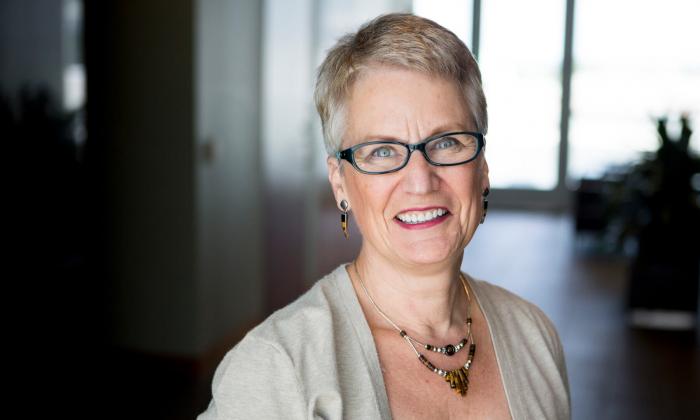In 1991, I was a New Yorker with long brown hair, mom to a 6-year-old and in my 16th year of teaching. That year, we were wearing high-waisted tapered pants, and no one thought NFL-style shoulder pads for women’s suits were at all strange. A lot has changed, as a glance at my photo will prove.
Teaching Tolerance began that year; the following year, we released the first issue of this magazine. The project was founded to reduce prejudice among American school children by providing their teachers with ideas and resources to promote intergroup contact.
Our alliterative name reflected the needs of the time as we saw them: Schools had been steadily integrating for more than 25 years, and these diverse classrooms offered the perfect opportunity for teachers to put empathy, compassion and appreciation of diversity into their lesson plans. This generation, we hoped, would reject hate and exclusion.
But the world changed, and we changed in response.
“If names be not correct, language is not in accordance with the truth of things.” —Confucius
Since Teaching Tolerance began, schools have become less, not more, integrated. That limits students’ opportunities to interact with people who have different lived experiences. American schools are more regimented and test-focused than they were in 1991, giving teachers less time and autonomy to teach about empathy. And the majority of today’s students are children of color; prejudice reduction doesn’t address the systemic inequities they face.
In response, we’ve evolved as a program. Our work shifted toward pedagogy and approaches that seek to empower students, make schools more equitable and address oppression head on. We developed a set of Social Justice Standards anchored by four pillars: Identity, Diversity, Justice and Action. While we continue to advocate for appreciation of difference, we understand that much more is needed.
In early 2017, we adopted a new mission to reflect our work and vision more accurately: “We work with teachers to prepare children and youth to be active participants in a diverse democracy.”
And today, in 2019, we’re wondering if it’s time to change our name.
Many readers—perhaps even you—have told us that our name falls short of what we offer. Tolerance, they point out, is too low a bar; it connotes “putting up with” rather than respect. We’ve pointed out that we see tolerance as “respect, acceptance and appreciation of the rich diversity of our world’s cultures.” We ask people to judge us on what’s inside the book and not what’s on the cover.
Names matter, though. They signal what’s inside. The name Teaching Tolerance has an impact on many people, especially people from marginalized communities and groups who don’t feel respected by this name. As social justice educators, we preach that impact is more important than intent. And we’re taking that message to heart.
For the next two months, we’re exploring the possibility of a new name, one that truly reflects who we are and what we stand for. It’s not something we take on lightly. Teaching Tolerance is used by tens of thousands of educators every month; generations of teachers cherish our program. Will they recognize us behind a new name?
We’re asking you to help inform the exploration process by letting us know what you think. Click here for a link to our survey.
We’ll keep you posted!
—Maureen Costello


0 COMMENTS